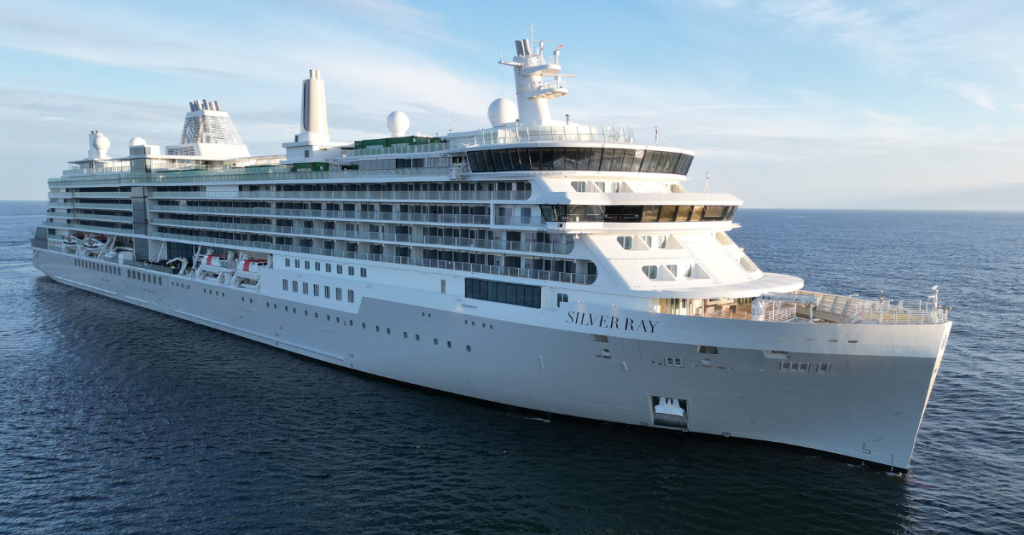Silversea’s new president has unveiled plans to regionalise the cruise line’s fleet, aiming to address inefficiencies identified in past itineraries. These changes are set to offer guests more location-focused journeys.
This move comes as the company seeks to enhance operational efficiency by minimising the need for extensive repositioning, allowing for a better travel experience.
Strategic Regionalisation to Enhance Operational Efficiency
Silversea’s new approach involves strategically positioning its fleet to avoid inefficient global repositioning. The company’s new president, Bert Hernandez, expressed his surprise at the inefficiency of past itineraries, emphasising the need for a shift. By adopting regionalisation, Silversea can draft itineraries that are more intensive and focused on specific destinations, particularly in key markets like Australia and New Zealand.
Peter Shanks, Managing Director for the UK, Ireland, and Middle East, pointed out that this change aims to address operational challenges effectively. Targeting regional deployments primarily from 2025 onwards, these updates could enhance the overall travel experience while ensuring stability across Silversea’s fleet operations.
Benefits for Travel Agents and Partners
This strategic shift is expected to benefit travel agents significantly. By relocating ships to specific regions, agents can deepen their familiarity with the vessels deployed in their areas, thus enhancing their ability to sell and provide insights to customers. Shanks believes that increased exposure to these ships will empower agents, giving them firsthand experiences that they can relay to clients.
He noted that despite the potential challenges of modifying itineraries, these changes, if implemented efficiently, will maintain current bookings on alternative routes. The operational tweaks are designed to streamline processes and provide a consistent quality of service.
Integration of Unique Regional Experiences
Silversea endeavours to integrate local festivals and events into its itineraries, offering repeat guests a unique travel experience with each journey. This approach aims to alleviate the common issue with repositioning cruises, which often face low sales due to extended periods spent at sea.
Hernandez highlighted inefficiencies in previous deployments, describing them as “hard to sell,” with travel advisors facing difficulties in promoting trips with little onshore activity.
By embedding cultural and event-driven experiences in their schedules, Silversea aims to present a broad canvas of options to its clientele, thereby enhancing appeal and engagement.
Addressing Safety and Operational Feasibility
While addressing itinerary changes, Hernandez cited safety concerns and logistical barriers as critical issues affecting Silversea’s operations. For instance, the Red Sea cancellations earlier in the year were deemed unavoidable due to potential threats to passenger safety.
In addition to security challenges, some ports proved inadequate for accommodating Silversea’s ships, which necessitated unexpected alterations in the planned itineraries. Such issues underscore the importance of operational feasibility in itinerary planning.
Hernandez acknowledged the negative impact of frequent schedule changes but pledged significant improvements in operational strategies to mitigate these disruptions.
A Commitment to Long-Term Stability
In planning for the future, Silversea emphasises a period of stability, focusing on predictable and efficient fleet deployments. Shanks expressed optimism about these strategic adjustments, which are designed to build a robust and reliable operational framework. The ultimate goal is to harmonise travel routes with regional demands.
Through meticulous planning and execution, Silversea seeks to establish equilibrium in its cruising schedules, ensuring an optimal balance between adventure and logistical practicality. Hernandez is confident that these changes will drastically reduce inefficiencies.
Confronting Operational Challenges
Navigating operational hurdles, such as port accessibility and route viability, remains a priority for Silversea. The company is committed to refining its operational procedures to minimise the need for itinerary changes.
By addressing these challenges head-on, Silversea aims to enhance the overall cruising experience, offering seamless and enjoyable travel options without the stress of last-minute alterations. This initiative is set to strengthen Silversea’s position within the competitive cruise industry framework.
Hernandez described overcoming these operational barriers as essential for sustained growth and improved customer satisfaction.
Future Prospects for Silversea Cruises
With these changes, Silversea is poised for a promising future, focusing on innovative itineraries and enhanced regional presence. This shift is part of a broader strategy to align the company’s offerings closely with customer expectations, ensuring unique and culturally rich journeys for passengers.
As Silversea embarks on this regionalisation strategy, it aims to provide stable and enriching travel experiences.
Through innovative planning, the cruise line is set to deliver exceptional itineraries that promise unique adventures while prioritising operational efficiency.

